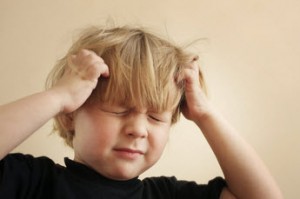Myths & Facts:

About Lice
- Lice do not fly or jump. They crawl from one head to another through head to head contact or personal items like brushes, hats or helmets.
- Lice are not living in your house and re-infesting your family. Lice can only live and reproduce on a human head. Off a head, adult lice die within 48 hours..
- Lice like hair whether it is clean or dirty.
- Lice is a year-round problem. There is no season for lice.
Who Can Get Lice? Anyone with hair on their head.

- Boys do get lice. Even boys with very short hair or buzz cuts.
- Parents get lice from their kids, even if they never had lice when they were kids.
- Only 50% of people are itchy from head lice. Itches are caused from lice bites, not from the bugs crawling around. It may take up to 4 weeks of an infestation to become itchy. People taking antihistamines for allergies may never become itchy at all
- At any given time 3% of school-aged children have lice.
Products
- The over-the-counter pesticides and prescription treatments have become less effective as the lice have grown resistant to the pesticides they contain. Product failure is part of reason for the high level of lice outbreaks. People using these products follow all the directions, do an overwhelming amount of housework and in 2-3 weeks find that they have lice again. If this has happened to you, it’s not your fault! You did not have the right products, tools and instructions to truly get rid of lice
- Special house cleaning products, sprays and laundry additives are completely unnecessary. Using the heat of the dryer or vacuuming items that have had contact with someone’s head is all you need to do. Services that sell offer these items are taking advantage of their customers
- Hair color does not kill lice, it colors lice.
- Hairspray and gel are not lice deterrents, but mint and citronella are.
Lice 101
- A louse is one bug, lice are plural. Nits are the lice eggs. Sometimes nits are referred to as hatched nits but we refer to the nits as viable eggs.
- Lice are wingless bugs that range in size from as small as a pencil point to the size of a small ant. (2mm to 4mm) Lice and nits can range in color from tan to dark brown.
- Lice do not jump or fly, they only crawl. Lice have 6 legs with claws at the end designed to cling to the hair shaft and they are masters at hiding.
- An adult female louse can lay 3-5 waterproof, hard to remove nits 2 times a day. (Scroll down for Life Cycle of a Louse).
- Lice do not live on our pets.
- Lice do not burrow and they must be on a human head in order to survive.
- Nits, once removed from the head are harmless.
Life Cycle of Head Lice:
Day 0
A nit, the egg of the louse, is laid on the shaft of a hair. Nits that come off the hair are harmless and cannot infect a new person.
Lice is a year-round problem. There is no season for lice.
Nits hatch 7-10 days from when they are laid. When a louse is first hatched it is called a nymph.
Day 9-20
The nymphs shed their outer shell (exoskeletal system) 3 times before the bug is an adult. The nymphs will very rarely leave their host’s head until mature & fertilized.
Day 17-20
A female adult only needs to be fertilized 1 time and is fertile for life.
Day 18-22
The female lays her 1st eggs 1-2 days after being fertilized. She can lay 3-5 eggs twice a day for the next 14-16 days. She can lie up to 200 eggs in her lifetime. If a fertilized louse moves onto a new head, the fertilized louse may thrive and lay nits almost immediately. She may not survive the blood type of the new host and die leaving behind a few hard to detect viable nits that will hatch to thrive on a new host.
Day 32-38
The louse dies having lived 32-38 days since being laid as a nit.
